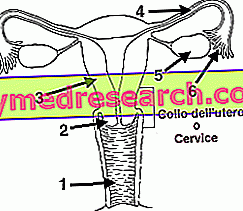Many people tend, mistakenly, to confuse allergies with food intolerances: the concepts, however, are very different, although the related symptoms are, in some ways, superimposable.
In this article we will try to shed light on the meaning of "allergy" and "intolerance", analyzing the causes that trigger them, the underlying mechanism, the symptoms and the possible remedies.
Food allergy

Food intolerance
By intolerance, however, the concept is different: the immune system is not involved, consequently an immune response is not triggered.
The etymology of the term "intolerance" already indicates the inability to endure, to tolerate: following an abundant intake of a specific food, the organism "rebels" because it cannot digest it properly. This is why intolerance is a toxic reaction of the body, unlike allergy (non-toxic reaction) that does not depend on the dose taken.
Food Intolerances - Video
X Problems with video playback? Reload from YouTube Go to Video Page Go to Wellness Destination Watch the video on youtubeFood allergies or intolerance?
To simplify the concepts, an example is given: the immune system of a subject allergic to strawberries reacts in an exaggerated way even if the person eats only one fruit, which means that even a single strawberry is perceived as a "foreign and potentially dangerous element" for the organism, which is defended by causing a first alarm bell (itching and skin irritation). If instead a person is intolerant to strawberries and takes a very small amount (one or two strawberries), there will be no skin reaction. However, when the subject eats a large amount of these fruits, the food can no longer be digested: consequently there will be effects on the skin.
Other factors that distinguish allergies and intolerances can be highlighted: allergies are classified based on the antibodies involved in the reaction (IgE-mediated and IgE-not mediated), while intolerances, not involving the antibody system, are divided into "enzymatic" and "pharmacological".
By "enzymatic" we mean an intolerance determined by the lack, or lack, of an enzyme involved in digestion: the enzyme cannot digest the food. This is the case, for example, of lactose intolerance, the characteristic sugar of milk, due to the lack of lactase, the enzyme responsible for the digestion of lactose.
By "pharmacological" we mean an intolerance in which the subject is sensitive to certain substances found in the food. It is the case, for example, of foods rich in tyramine and their effects in subjects hypersensitive to this substance.
The only factor that unites allergies to intolerances, even if only in part, is the symptomatology: common are, in fact, the effects that occur after an allergic reaction or a food intolerance: abdominal pain, diarrhea, nausea, swelling at the stomach, itching and redness of the skin are the symptoms that are found in both problems. Certainly, however, the symptoms that manifest themselves in an allergy can be greater than those that occur in an intolerance: the allergic manifestations can in fact flow into respiratory problems, cardiorespiratori, up to the most severe form of the shock anaphylactic, which, if not treated immediately with specific drugs, can cause coma and even death.
It is good to remember that it is sometimes possible to verify forms of food intolerance that can be confused with an allergy, because they are characterized by elements that are found in both disorders: for this reason, we speak of "pseudo-allergies". These particular problems, included in the category of pharmacological intolerances, are intolerances defined as a sort of allergy due to the production of histamine following the ingestion of a food. For example, crustaceans, chocolate, tomatoes, canned fish are all foods called "histamine-liberating substances".
Regarding the remedies that can be used to avoid allergies and intolerances, if that particular food is completely eliminated from the diet of an allergic person, it will no longer have any type of manifestation (exclusion diet). If, on the other hand, a person is intolerant, he can still continue to eat that food, but in small doses; sometimes total abstention is suggested for short periods, in order to recreate the enzymatic heritage necessary for the digestion of the food.
Summary table
ALLERGY | INTOLERANCE |
Non-toxic, exaggerated and violent reaction | Toxic reaction |
Involvement of the antibody system | Does not provide immune response |
Independent dose | Employee dose |
Classification: IgE-mediated and IgE-not mediated allergies. | Classification: enzymatic and pharmacological intolerances |
Cause: the immune system produces antibodies against food proteins, a potential danger to the body. | Cause: the enzyme deficiency prevents food digestion. |
Symptoms: abdominal pain, diarrhea, nausea, stomach swelling, itching and redness of the skin, breathing difficulties, cardiorespiratory, anaphylactic shock. | Symptoms: abdominal pain, diarrhea, nausea, stomach swelling, itching and redness of the skin. |
Remedy: total elimination of food from the diet. | Remedy: food intake in small quantities. |



